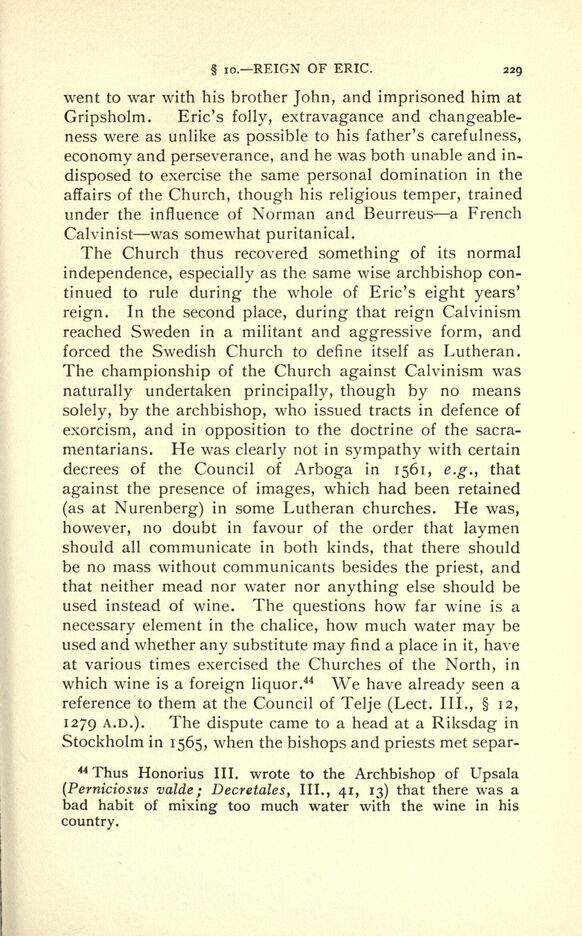
Full resolution (JPEG) - On this page / på denna sida - V. The Swedish Reformation under Gustaf Vasa and his sons Eric and John (1520—1592 A.D.)

<< prev. page << föreg. sida << >> nästa sida >> next page >>
Below is the raw OCR text
from the above scanned image.
Do you see an error? Proofread the page now!
Här nedan syns maskintolkade texten från faksimilbilden ovan.
Ser du något fel? Korrekturläs sidan nu!
This page has never been proofread. / Denna sida har aldrig korrekturlästs.
io. REIGN OF ERIC. 229
went to war with his brother John, and imprisoned him at
Gripsholm. Eric s folly, extravagance and changeable-
ness were as unlike as possible to his father s carefulness,
economy and perseverance, and he was both unable and in
disposed to exercise the same personal domination in the
affairs of the Church, though his religious temper, trained
under the influence of Norman and Beurreus a French
Calvinist was somewhat puritanical.
The Church thus recovered something of its normal
independence, especially as the same wise archbishop con
tinued to rule during the whole of Eric s eight years
reign. In the second place, during that reign Calvinism
reached Sweden in a militant and aggressive form, and
forced the Swedish Church to define itself as Lutheran.
The championship of the Church against Calvinism was
naturally undertaken principally, though by no means
solely, by the archbishop, who issued tracts in defence of
exorcism, and in opposition to the doctrine of the sacra-
mentarians. He was clearly not in sympathy with certain
decrees of the Council of Arboga in 1561, e.g., that
against the presence of images, which had been retained
(as at Nurenberg) in some Lutheran churches. He was,
however, no doubt in favour of the order that laymen
should all communicate in both kinds, that there should
be no mass without communicants besides the priest, and
that neither mead nor water nor anything else should be
used instead of wine. The questions how far wine is a
necessary element in the chalice, how much water may be
used and whether any substitute may find a place in it, have
at various times exercised the Churches of the North, in
which wine is a foreign liquor.
44
We have already seen a
reference to them at the Council of Telje (Lect. III., 12,
1279 A.D.). The dispute came to a head at a Riksdag in
Stockholm in 1565, when the bishops and priests met separ-
44
Thus Honorius III. wrote to the Archbishop of Upsala
(Perniciosus valde ; Decretales, III., 41, 13) that there was a
bad habit of mixing too much water with the wine in his
country.
<< prev. page << föreg. sida << >> nästa sida >> next page >>